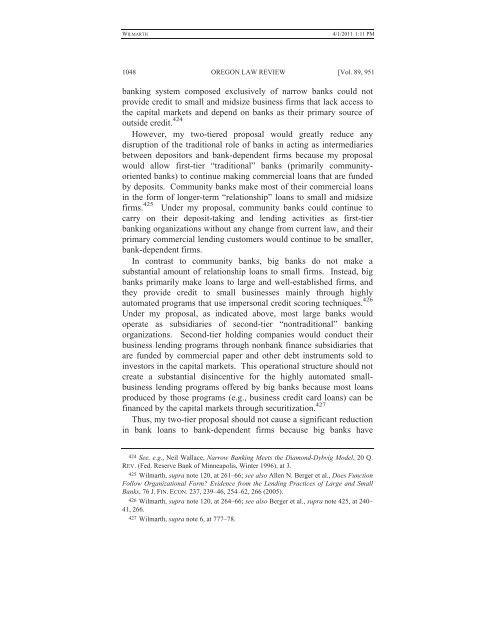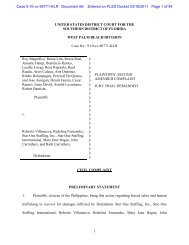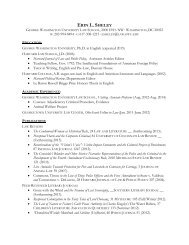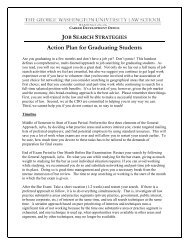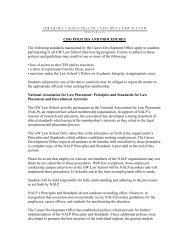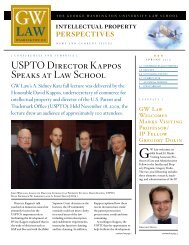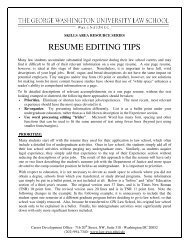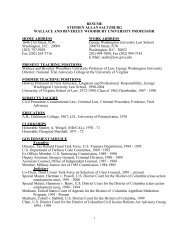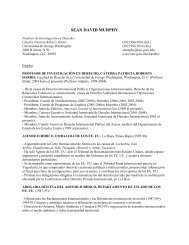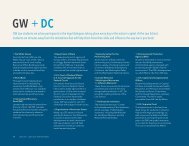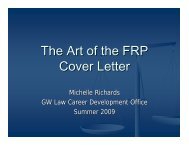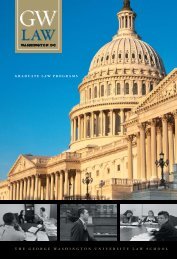CLE Materials for Panel #1 - George Washington University Law ...
CLE Materials for Panel #1 - George Washington University Law ...
CLE Materials for Panel #1 - George Washington University Law ...
You also want an ePaper? Increase the reach of your titles
YUMPU automatically turns print PDFs into web optimized ePapers that Google loves.
WILMARTH<br />
4/1/2011 1:11 PM<br />
1048 OREGON LAW REVIEW [Vol. 89, 951<br />
banking system composed exclusively of narrow banks could not<br />
provide credit to small and midsize business firms that lack access to<br />
the capital markets and depend on banks as their primary source of<br />
outside credit. 424<br />
However, my two-tiered proposal would greatly reduce any<br />
disruption of the traditional role of banks in acting as intermediaries<br />
between depositors and bank-dependent firms because my proposal<br />
would allow first-tier “traditional” banks (primarily communityoriented<br />
banks) to continue making commercial loans that are funded<br />
by deposits. Community banks make most of their commercial loans<br />
in the <strong>for</strong>m of longer-term “relationship” loans to small and midsize<br />
firms. 425 Under my proposal, community banks could continue to<br />
carry on their deposit-taking and lending activities as first-tier<br />
banking organizations without any change from current law, and their<br />
primary commercial lending customers would continue to be smaller,<br />
bank-dependent firms.<br />
In contrast to community banks, big banks do not make a<br />
substantial amount of relationship loans to small firms. Instead, big<br />
banks primarily make loans to large and well-established firms, and<br />
they provide credit to small businesses mainly through highly<br />
automated programs that use impersonal credit scoring techniques. 426<br />
Under my proposal, as indicated above, most large banks would<br />
operate as subsidiaries of second-tier “nontraditional” banking<br />
organizations. Second-tier holding companies would conduct their<br />
business lending programs through nonbank finance subsidiaries that<br />
are funded by commercial paper and other debt instruments sold to<br />
investors in the capital markets. This operational structure should not<br />
create a substantial disincentive <strong>for</strong> the highly automated smallbusiness<br />
lending programs offered by big banks because most loans<br />
produced by those programs (e.g., business credit card loans) can be<br />
financed by the capital markets through securitization. 427<br />
Thus, my two-tier proposal should not cause a significant reduction<br />
in bank loans to bank-dependent firms because big banks have<br />
424 See, e.g., Neil Wallace, Narrow Banking Meets the Diamond-Dybvig Model, 20 Q.<br />
REV. (Fed. Reserve Bank of Minneapolis, Winter 1996), at 3.<br />
425 Wilmarth, supra note 120, at 261–66; see also Allen N. Berger et al., Does Function<br />
Follow Organizational Form? Evidence from the Lending Practices of Large and Small<br />
Banks, 76 J. FIN.ECON. 237, 239–46, 254–62, 266 (2005).<br />
426 Wilmarth, supra note 120, at 264–66; see also Berger et al., supra note 425, at 240–<br />
41, 266.<br />
427 Wilmarth, supra note 6, at 777–78.


